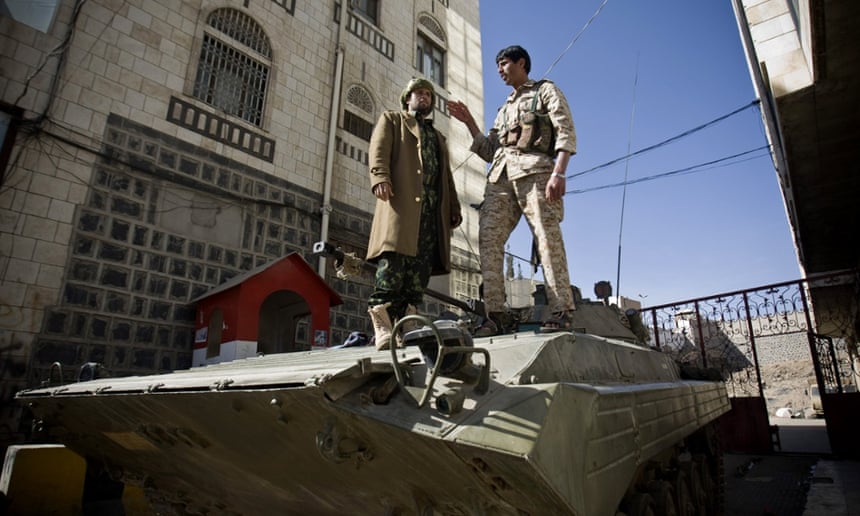Chaos in Yemen has left the US military unable to monitor the vast arsenal it has spent years providing to its Yemeni counterpart.
Yemen is now functionally leaderless after Houthi rebels took over the capital of Sana’a last month, prompting the resignation of President Abd Rabbo Mansour Hadi. The rebels are said to control the Yemeni military’s arms depots and bases, giving them effective control of US-provided and other heavy weaponry, including tanks and artillery.
The unrest has “limited our ability to conduct routine end-use monitoring checks and inspections we would normally perform”, a US defense official told the Guardian.
US military officials would not specify which military equipment it could no longer track, but in recent years the US has sold or leased equipment including helicopters, night-vision gear, surveillance equipment, military radios and transport aircraft to Yemen.
Since 2006, the US military has provided more than $400m to Yemen, according to research estimates prepared for Congress.
The US has also trained the Yemeni military, particularly on its surveillance drones, a process that predated Obama but has accelerated under him.
Four people were reportedly killed on Monday in the latest drone strike aimed at al-Qaida in the Arabian Peninsula
During Barack Obama’s presidency, the US military has propped up the Yemeni security apparatus, particularly its special operations forces. Bolstering the capabilities of local military allies is a cornerstone of Obama’s ambition, to remove the burden of security duties in the Middle East inherited from his predecessors. Obama had cited Yemen as a model for the future of US counter-terrorism.
In exchange, two successive Yemeni leaders – both now deposed – have opened their country to the drone strikes and other counter-terrorism operations conducted by the CIA and the Joint Special Operations command.
The allegiance of Yemen’s military remains unclear, as does the integrity of the Yemeni chain of command. Following the Houthis’ advance on Sana’a, the Pentagon said on 24 January that it would curtail its training of the country’s military.
But the White House has vowed not to relent in its drone strikes against the local al-Qaida affiliate. Even as the Houthis have upended Yemeni governance, the US has launched three drone strikes in a single week, killing at least 11 people in strikes on 26 January, 31 January and 2 February.
The US military has indicated it is willing to engage the Houthis. Rear Adm John Kirby, the Pentagon spokesman, told reporters on 27 January that the US was in touch with “various parties in Yemen” concerning the country’s future.
“It is a fact and it has to be assumed that the Houthis will have reason to and will want to have discussions with the international community about the way forward. “The US government is participating in those discussions,” Kirby said.
The US embassy in the capitol of Sana’a remains open, but has closed its operations to the public. US citizens in the country have been warned about a persistent danger to their security, and two US naval warships remain nearby in case the ambassador orders an evacuation.
The defense official, who would not speak to the Guardian on the record, said the US would seek to regain its monitoring ability over Yemen’s US-provided arsenal as quickly as it could.
“We continue to monitor the situation in Yemen closely and, as the security environment permits, we will continue working with the Government of Yemen to ensure equipment granted or sold to the Government of Yemen by the United States remains accounted for,” the official said.
